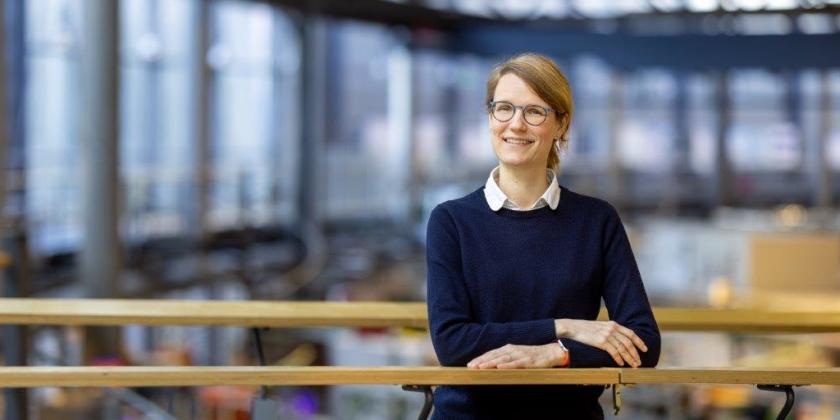TU Berlin appoints Renske van der Veen as professor

Dr. Renske van der Veen investigates catalytic processes at BESSY II, which are crucial for the production of green hydrogen, among other things. © M: Setzpfandt/HZB
For the past two years, Dr Renske van der Veen has led a research group in time-resolved X-ray spectroscopy and electron microscopy at HZB. Her research focuses on catalytic processes that enable, for example, the production of green hydrogen. She has now been appointed to a S-W2 professorship at the Institute of Optics and Atomic Physics (IOAP) at the Technische Universität Berlin.
Dr Renske van der Veen specialises in ultrafast X-ray methods, which she uses at BESSY II to study the fast processes involved in catalysis. Van der Veen is also contributing her expertise to the scientific requirements profile for the successor X-ray source BESSY III.
Renske van der Veen studied at the ETH Zurich and completed her PhD at the École Polytechnique Fédérale de Lausanne (EPFL). She went on to do research at the California Institute of Technology, the Max Planck Institute for Biophysical Chemistry in Göttingen and the University of Illinois, where she was also an assistant professor. She has received the Alexander von Humboldt Foundation's Sofja Kovalevskaja Award and the Packard Fellowship for Science and Engineering.
arö
https://www.helmholtz-berlin.de/pubbin/news_seite?nid=24648;sprache=en
- Copy link
-
Helmholtz Doctoral Award for Hanna Trzesniowski
During her doctoral studies at the Helmholtz Centre Berlin, Hanna Trzesniowski conducted research on nickel-based electrocatalysts for water splitting. Her work contributes to a deeper understanding of alkaline water electrolysis and paves the way for the development of more efficient and stable catalysts. On 8 July 2025, she received the Helmholtz Doctoral Prize, which honours the best and most original doctoral theses in the Helmholtz Association.
-
New department at HZB: ‘AI and Biomolecular Structures’
Since 1 July 2025, Dr. Andrea Thorn has been setting up the new AI and Biomolecular Structures department at HZB. A biophysicist with many years of experience in AI-based tools for structural biology, she is looking forward to collaborating closely with the macromolecular crystallography team at the MX beamlines of BESSY II.
-
Almost 4,000 People at the Long Night of the Sciences at HZB
Helmholtz-Zentrum Berlin was delighted to welcome nearly 4,000 visitors to its Adlershof campus for the Long Night of the Sciences. It was a fantastic celebration of science, and we thank all our guests for their great interest.
